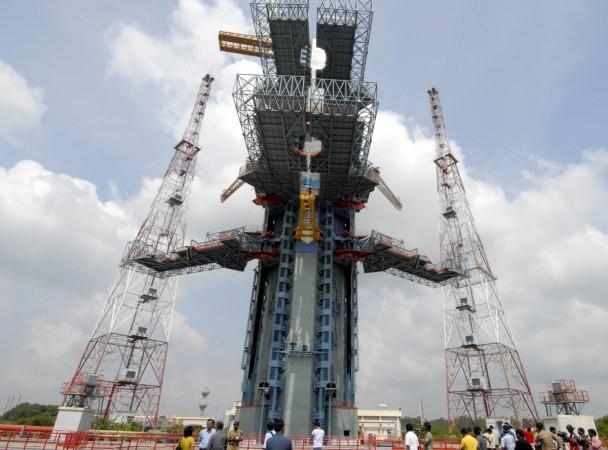The Indian Space Research Organization (ISRO) has been preparing for its second lunar mission Chandrayaan-2 for some time now. While all eyes have been on the launch date, it looks like ISRO has made some changes to its plans and postponed the launch of Chandrayaan-2 to October 2018.
It was earlier reported that ISRO would launch India's second moon mission in April, but ISRO chairman K Sivan has now said that Chandrayaan-2 will take off in October.

"Chandrayaan 2 will not be in April, it has been changed to October," the Press Trust of India quoted Sivan as saying.
Chandrayaan-2 Fact File
- The Chandrayaan-2 mission is said to be much more challenging than the first one.
- This time the spacecraft will be carried by heavy-payload lifter GSLV Mk II, unlike the first time when the spacecraft was launched by a PSLV rocket.
- The GSLV Mk II will launch the spacecraft that will weigh about 3,290kg, which includes an orbiter, a rover and a lander to the moon.
- The Chandrayaan-2 is being readied at ISRO's satellite center in Bengaluru
- It will carry 13 scientific instruments, which will study the moon
- Over 100 scientists are said to be working on the mission.
Explaining the reason for the delay, Sivan said that the mission still needs to undergo a few tests, and Chandrayaan-2 will be ready for lift-off only after they have been completed.
ISRO describes Chandrayaan-2 as a "totally indigenous mission comprising an orbiter, lander, and rover." And lauding the organization's efforts, minister of state in the prime minister's office Dr Jitendra Singh has said that India's mission was much more powerful than NASA's Apollo missions.
"Chandrayaan-2 is one of the most remarkable ISRO missions of 2018 and it will be a world event," Singh, who is in charge of India's space missions, earlier told NDTV. He added that the unmanned mission will add to India's credibility and competitiveness when it comes to space programmes and "packs more power than the Apollo missions by NASA."
Speaking about Chandrayaan-2's capabilities, he had said that the mission is scientifically very advanced and can send important data on the moon. The data then "may open up possibilities of future habitation of the moon."
"Chandrayaan-2 will be a breakthrough mission not only for India but for the entire world," he added, and also said that it would make Indians "proud."
While the project itself is intriguing, it has also been said that the lunar mission is cheaper than Hollywood's 2014 sci-fi movie "Interstellar."
The cost of the mission has been pegged at about Rs 800 crore (approximately $123 million) while the budget of the Matthew McConaughey-starrer was a whopping Rs 1,062 crore, which is about $165 million.
Even ISRO's Mars mission Mangalyaan, launched in 2013, reportedly cost lesser than Hollywood movie "Gravity." While Mangalyaan was worth RS Rs 470 crore, about $72.4 million, the Sandra Bullock-starrer was made in a budget of Rs 644 crore ($100 million).
Rover will spend 14 active days on moon's surface
- Once the GSLV rocket carrying the spacecraft is launched from Sriharikota, the orbiter will reportedly take a month or two to reach the moon's orbit, which is 3,82,000km away.
- The lander will then separate from the orbiter and make a soft-landing near the south pole.
- "The 6-wheeled rover fixed within the lander will get detached and move on the lunar surface," Sivan earlier told the Times of India.
- The rover will then spend 14 days on the moon's surface, where it will carry out several tests. Fourteen lunar days is equal to one day on the earth.
- The rover will then send images and other information about the moon's surface back to the earth.
Apart from the Chandrayaan-2 mission, ISRO is also said to be studying the possibility of habitation on the moon.
The same was confirmed by Singh Wednesday, March 21.
"ISRO, along with academic institutions, is doing experimentation on potential structures for lunar habitation," Bloomberg quoted him as saying. "Various options are being studied about the requirements and complexities of habitats."














